
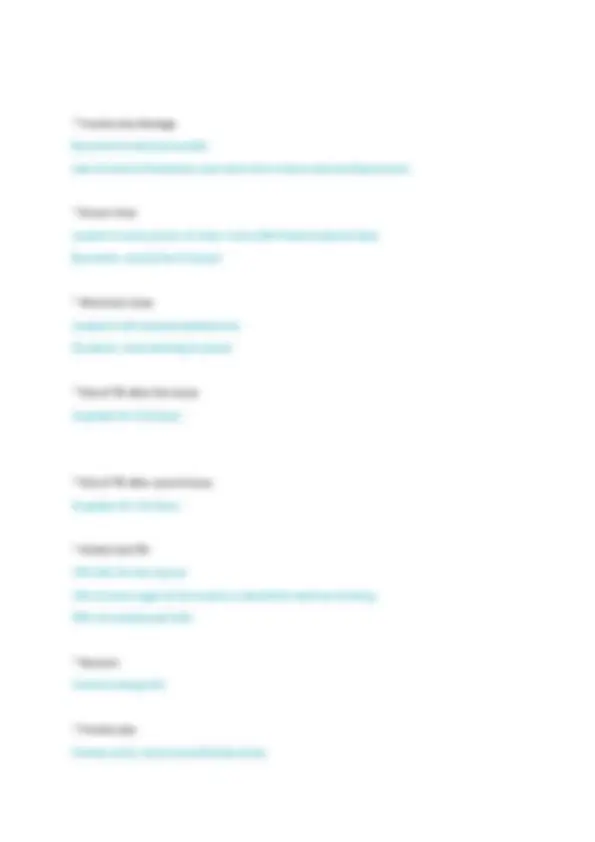
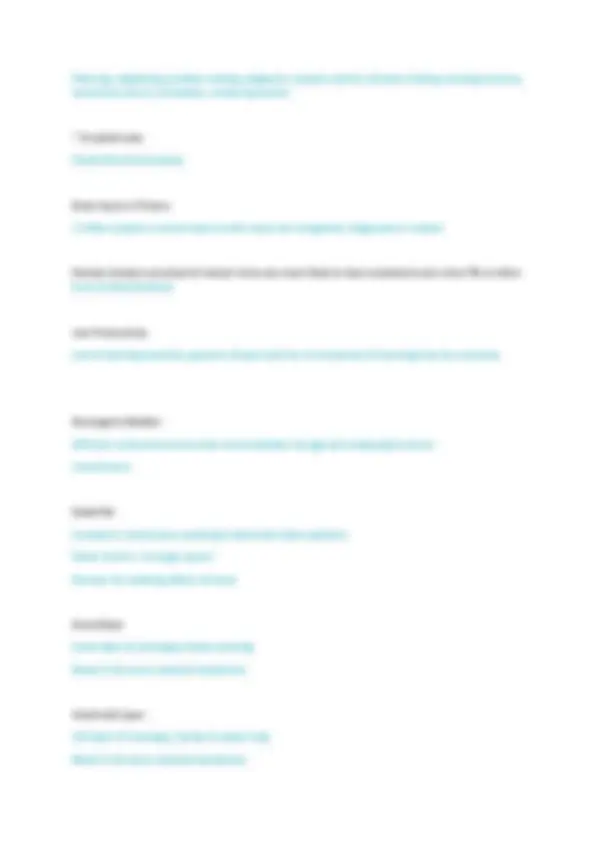
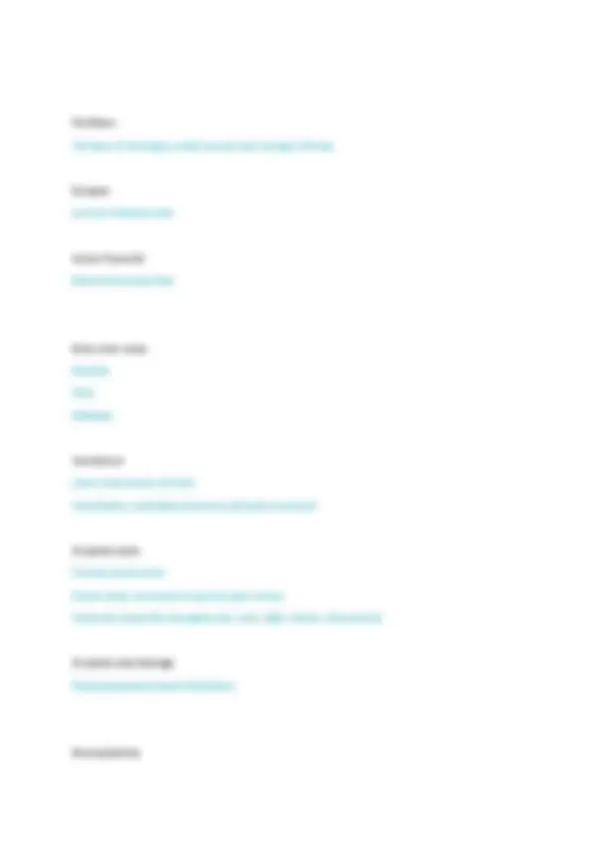
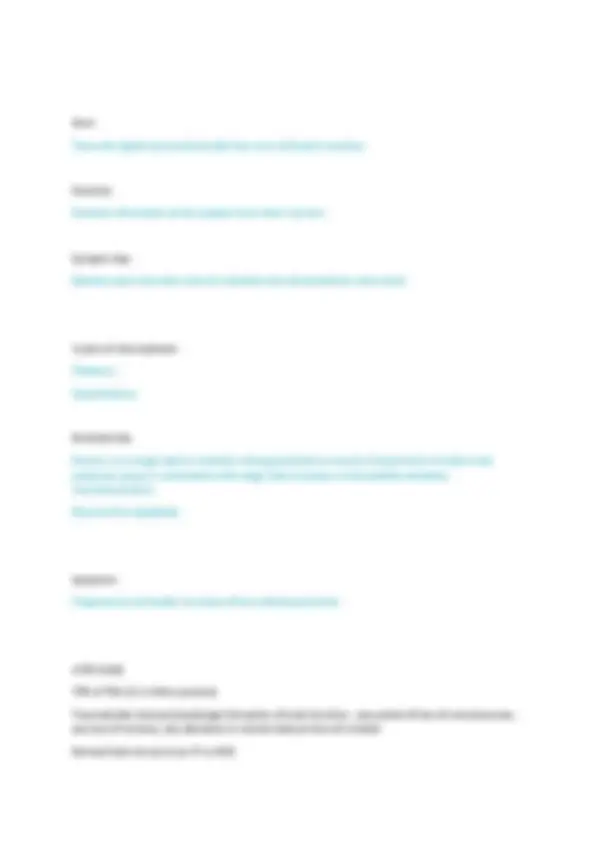
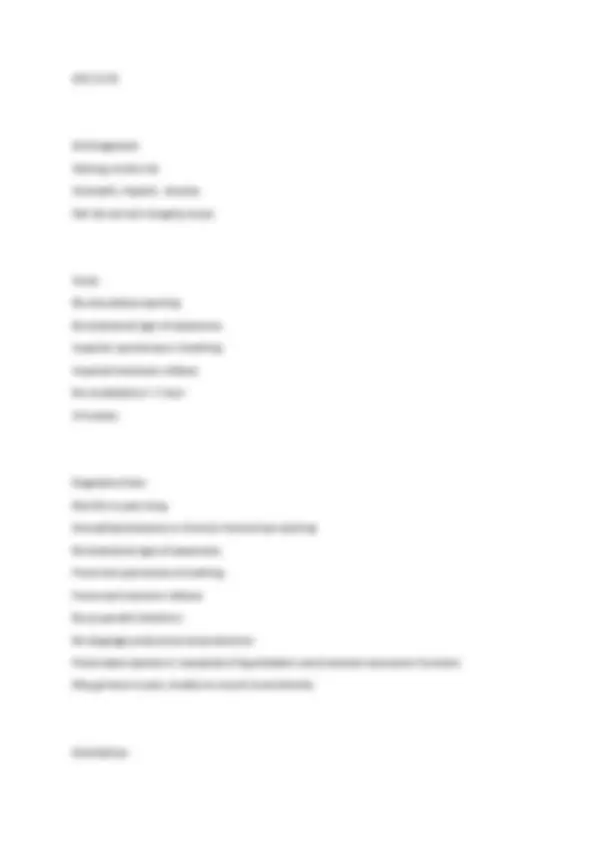
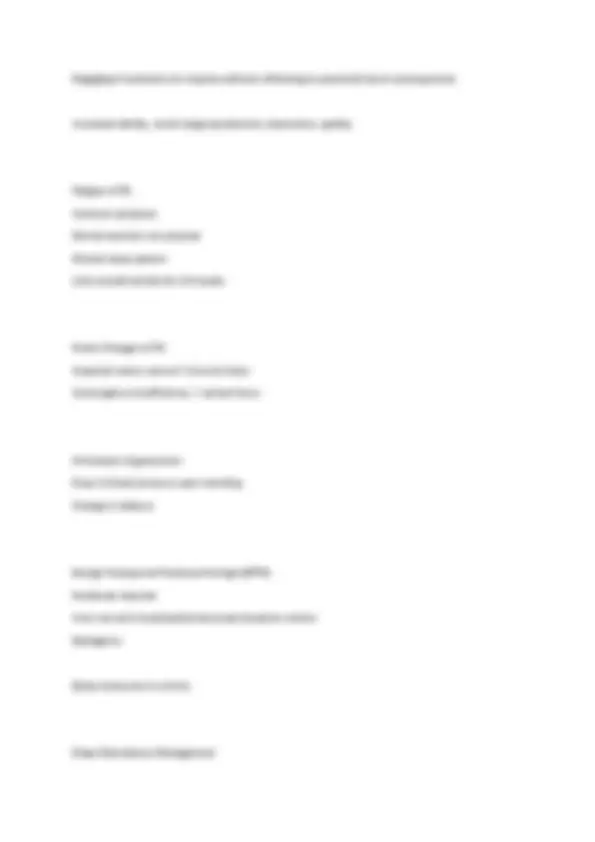
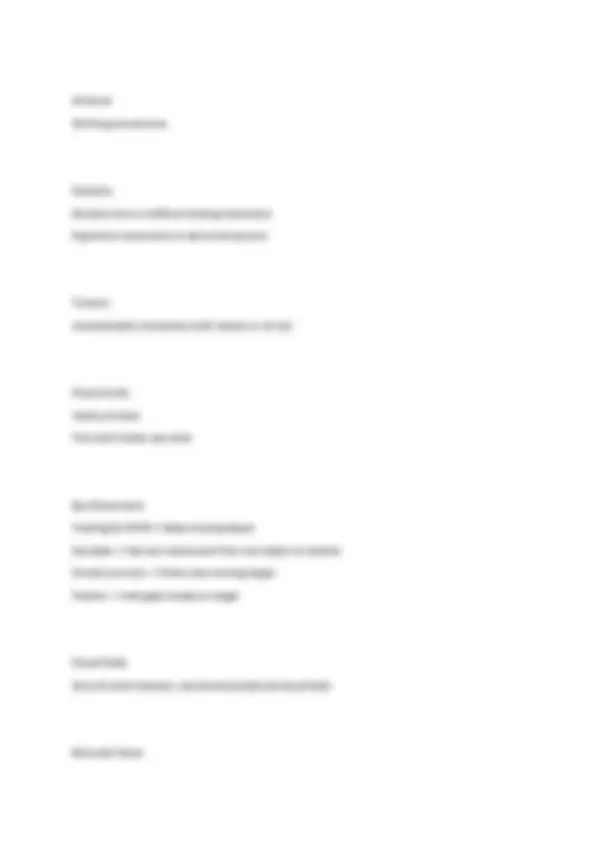
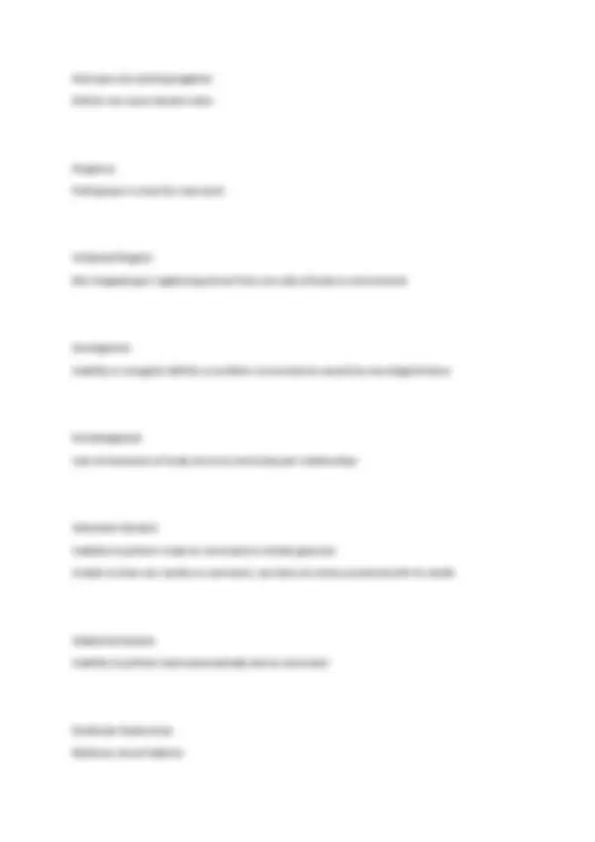
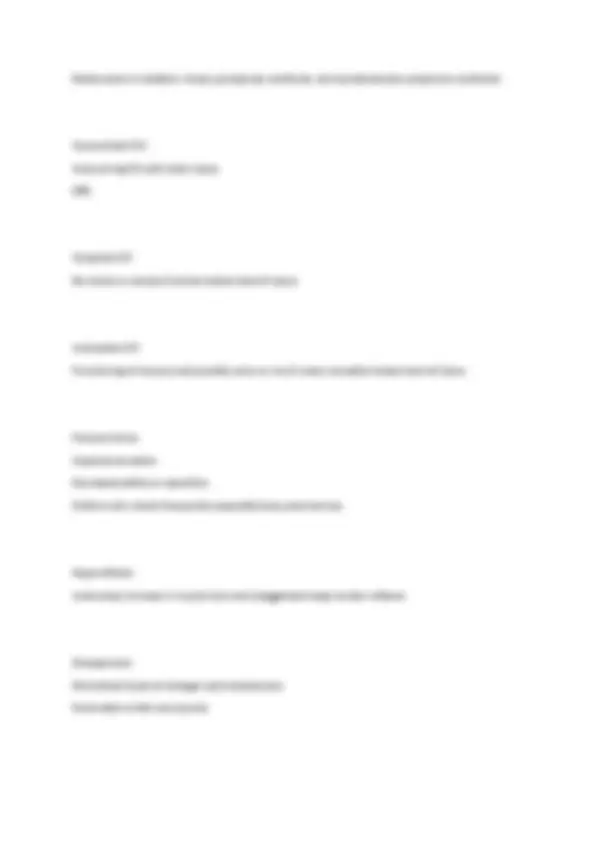


Study with the several resources on Docsity

Earn points by helping other students or get them with a premium plan


Prepare for your exams
Study with the several resources on Docsity

Earn points to download
Earn points by helping other students or get them with a premium plan
Community
Ask the community for help and clear up your study doubts
Discover the best universities in your country according to Docsity users
Free resources
Download our free guides on studying techniques, anxiety management strategies, and thesis advice from Docsity tutors
CBIS Exam-with 100% verified solutions latest update
Typology: Exams
1 / 16

This page cannot be seen from the preview
Don't miss anything!










An alteration of brain function or other evidence of brain pathology caused by an external force
Planning, organizing, problem solving, judgment, impulse control, decision making, working memory, emotional control, motivation, verbal expression
Pia Mater 3rd layer of meninges; molds around sulci and gyri of brain Synapse Junction between cells Action Potential Electrical impulse fired Brain stem areas Medulla Pons Midbrain Cerebellum Lower back section of brain Coordinates, modulates and stores all body movement Occipital Lobes Primary visual center Visual cortex connected to eyes by optic nerves Interprets visual info (recognize size, color, light, motion, dimensions) Occipital Lobe Damage Visual-pereptual-motoric distortions Neuroplasticity
Typically unilateral, throbbing, stabbing or sharp pain Tx with triptans, NSAIDs, dark room, quiet environment Neuralgia Pain caused by damage to nerve or structural change in nerve Standard Precautions Hand hygiene, PPE, respiratory hygiene, safe injection and disposal of sharps, cleansing of equipment, isiolation Awareness An individual's ability to receive and process information and use that information to relate to an intentional way to the outside world Regulated by higher cortical areas in cerebrum Costs of Brain Injury Lost productivity Insufficient or inappropriate diagnosis, treatment and care CDC Centers for Disease Control Carries out projects to reduce the incidence of TBI Brain Injury is a silent epidemic Person looks normal Under diagnoses, unreported Problems at work/school, changes in personal relationships, legal problems, homelessness Public Funding of TBI Medicaid Medicare Patient Protection and Affordable Care Act 2010
Axon Transmits signals electrochemically from one cell body to another Dendrite Receives information at the synapse from other neurons Synaptic Gap Between axon and other neuron's dendrite (neurotransmitters come here) 2 parts of diencephalon Thalamus Hypothalamus Excitotoxicity Neuron is no longer able to maintain resting potential as a result of impairment of sodium and potassium pump in combination with large scale increases in extracellular excitatory neurotransmitters Neurons fire repeatedly Apoptosis Programmed cell death; increases of free radical production mTBI (mild) 75% of TBIs (1.1 million persons) Traumatically induced physiologic disruption of brain function.. any period of loss of consciousness, any loss of memory, any alteration in mental state at time of incident Normal brain structure on CT or MRI
Engaging in behaviors on impulse without reflecting on potential future consequences Increased lability, social inappropriateness, depression, apathy Fatigue mTBI Common symptom Mental exertion not physical Altered sleep pattern Limit overall activity for 2- 4 weeks Vision Changes mTBI Impaired motor control-> blurred vision Convergence insufficiency - > cannot focus Orthostatic Hypotension Drop in blood pressure upon standing Change in balance Benign Paroxysmal Positional Vertigo (BPPV) Vestibular disorder Inner ear and visual/spatial and proprioceptive centers Nystagmus Epley maneuver to correct Sleep Disturbance Management
Sleep hygiene education: proper sleep ritual, bedroom environment, diet Neuropsychologists Assess cognitive and psychological functioning EI: education and reassurance Make recommendations for therapies for improved tx Monitor return to work or school Treat emotional problems The management and treatment of mTBI is a serious matter that requires a well rounded diagnostic and treatment approach. A concussion creates changes to the chemical and physical structures of brain which should be monitored to ensure full recovery. Review any lingering symptoms. ... Intrathecal Baclofen (ITB) Severe spasticity Used only when there is a poor response to oral meds Works at level of spine to inhibit excitatory activity at spinal reflexes Pump considered after 1 year Botox Injected into muscles and used to treat increased muscle stiffness (elbow, wrist, fingers typically) Contractures Fixed loss of PROM of joint due to pathology of connective tissue, tendons, ligaments, muscles, joint capsules and cartilage
Athetoid Writhing movements Dystonia Extreme tone or stiffness limiting movement Repetitive movements or abnormal posture Tremors Unpredictable movements with motion or at rest Visual Acuity Clarity of vision Test with Snellen eye chart Eye Movements Tracking for ROM-> follow moving object Saccades - > fast eye movements from one object to another Smooth pursuits - > follow slow moving target Fixation - > hold gaze steady on target Visual Fields Zone of vision forward, central and peripheral visual fields Binocular Vision
How eyes are working together Deficits can cause double vision Vergence Pulling eyes in close for near work Unilateral Neglect Not integrating or registering stimuli from one side of body or environment Anosognosia Inability to recognize deficits or problem circumstances caused by neurological injury Somatoagnosia Lack of awareness of body structure and body part relationships Ideomotor Apraxia Inability to perform a task on command or imitate gestures Unable to blow out candle on command, can blow out when presented with lit candle Ideational Apraxia Inability to perform tasks automatically and on command Vestibular Dysfunction Dizziness, loss of balance
Incontinence Presence of bilateral central lesions Damage to pedundal nerve and sacral nerve roots UTI Occur early and late post injury Cognitive or behavioral changes Maintain hydration, timed voiding